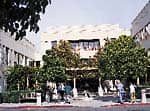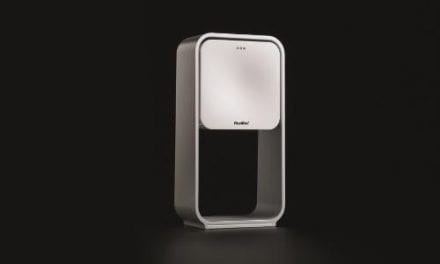Sleepcare Diagnostics creates a warm environment while providing top-notch sleep studies in its Ohio-based sleep center.

When Dixie Snider began working with the sleep studies field in the 1980s, providing equipment for sleep centers through the medical supply company she formed with her husband, she quickly realized she could improve on what she saw in the industry.
In 1985, she set out to do just that, creating what would become Sleepcare Diagnostics, a privately owned and accredited sleep diagnostic center in Mason, Ohio.
“Dixie’s main vision when she was doing this was to take the fear out of being tested for sleep disorders. For a lot of people, when they came in, to be hooked up and to be in a strange atmosphere, [it was unnerving],” says Arlene Bautista, senior director of marketing. “Dixie always got feedback on what people wanted. She wanted to be able to diagnose and treat these patients, but also take the fear out of testing for sleep disorders.
“That’s why with the continuity of care [offered at Sleepcare Diagnostics], we make such an extra effort on making sure that the environment is very warm for them. It is difficult for someone to come to a center and try to sleep when they are being tested,” she says.
While the Mason facility is the hub of Sleepcare Diagnostics, there are two other centers—one in Eastgate and another in Dayton, Ohio—that are joint ventures with physician groups. There are also plans in the works to open another center on the northwestern side of Cincinnati.
Twenty years after starting the center, Dixie Snider is chairwoman, and her husband, Jim, is CEO.
The Mason site is a single-story, approximately 17,000-square-foot facility that will be expanded later this year to 25,000 square feet to accommodate administrative needs. The center is also expanding its scope of care into pediatrics, ages 6 and up.

The center has 76 employees, including three physicians boarded in sleep disorders and 33 technicians. Patients are seen 6 days a week, including in the evenings, with 95% of the center’s patients referred by physicians, and the other 5% from direct referrals. The center performs almost 500 sleep studies a month, and treated about 5,119 people in 2004.
A hotel-like atmosphere is carried out through the wallpapered hallways, sconce lighting, two patient lounges with big-screen televisions and fireplaces, a patient breakfast nook, and an outside patio.
In the Mason Center, there are 20 sleep rooms under one roof for sleep studies, including three bariatric beds custom-designed for patients up to 800 pounds. The facility’s other rooms come equipped with amenities such as Swedish foam memory mattresses, individual thermostats, and sound insulation. Each room is prepared for each patient’s special requests in order to make them feel more comfortable during their stay, including such extras as preferred pillow type.
When a patient is referred to Sleepcare Diagnostics, a complete history is taken at the initial consultation, during which one of the physicians decides whether the patient needs a sleep study or other treatment, such as medication.
If a sleep study is necessary, it is usually scheduled within 72 hours, with a report submitted to the referring physician within 48 hours. The patient returns to the center for a follow-up consultation to discuss and review the sleep study and treatment options. If needed, the patient is then brought to the in-house durable medical equipment (DME) department for CPAP or bilevel PAP equipment. Another appointment is then scheduled for titration and education on using the equipment. Approximately 2 weeks later, the patient returns for a follow-up consultation with the physician.
“One of the major goals of this center from the time that I’ve been working here, which is almost 15 years, has been to maintain the highest quality possible,” says medical director Shahrokh Javaheri, MD. “We have been able to achieve this on several domains, including our consultation with the patients, performing a quality sleep study, training technicians to be able to score the study correctly, discussing it in a follow-up with the patient, applying appropriate therapy, whether it is medication or CPAP, and a very careful and caring follow-up through both our DME department, as well as ourselves. A total package of quality care for the patient at various domains has been our major goal.”
Patients are followed intensively for the first 2 weeks. Once a patient is CPAP tolerant, follow-ups are made every 6 months through a physician consultation and visit to the DME department to ensure that the equipment is still adequate for them.
“Here, at Sleepcare Diagnostics, it’s all-in-one,” says Jayson Snider, president and co-owner. “Your consultation is done here; your diagnostic is done here; your CPAP therapy is done here; the follow-up is done here; and your replacement of parts is also in-house.”
At Sleepcare Diagnostics, the follow-up is just as important as the diagnosis and treatment of patients. The center follows patients from as far back as 20 years ago.
“From the very beginning, we set the rule that the follow-up was very critical because, in general, CPAP tolerance is kind of low. Part of this issue really deals with the follow-up,” Javaheri says.
Sleepcare Diagnostics’ compliance rate on more than 12,000 patients from the past 20 years is more than 85%—a fact attributed partly to having an in-house DME department.
“Our patients get to know our technicians one-on-one,” Jayson Snider says. “We build relationships with these patients.”

Those relationships play an important role in putting patients at ease. “I think the most important thing is that if you were a patient and someone told you that you had to wear this mask over your nose for the rest of your life, there’s a lot of psychology involved to get this patient to maintain. By having everything under one roof, we can accomplish that,” Jim Snider says. “It’s a real good continuity of care.”
While Sleepcare Diagnostics treats patients for everything from snoring to sleep apnea to restless legs syndrome, it specializes in treating cardiovascular and morbidly obese patients.
“With the cardiovascular aspects, we just spend so much time in the research, and in educating the cardiologists. Our main focus has been the cardiology market, whereas 15 years ago, it was the ENT [specialists] market because back then, most of the primary doctors sent their patients to the ENT for snoring problems, and then they would send them to us for a sleep study,” Jim Snider says.
The cardiovascular focus began in 1997 when Javaheri, an expert in the field having done extensive research, published his first article on the topic. That study found that approximately half of the patients with congestive heart failure had significant sleep-disordered breathing.
“We have been able to work with cardiologists to familiarize them with the sleep-related breathing disorders that can either cause a variety of cardiovascular diseases or contribute to the progression of these diseases,” Javaheri says. “Since the recognition of sleep apnea and the science of polysomnography, perhaps the most important finding would be the connection between cardiovascular disease and sleep apnea. I am very pleased that we are at the leading edge of this issue.”
Javaheri says there has been a slow response in the field to connecting sleep-disordered breathing and cardiovascular problems. “That has been an important issue if you look at the evolution of sleep apnea in general. It took the public and physicians a long time to really realize [the relationship between] OSA and its impact on each individual,” he says. “This is, I think, the second phase of this science: to show to cardiologists and make the public, specifically patients with cardiovascular disorders, aware that we are dealing with a problem that also has impact on cardiovascular disease.
“This research has been so fundamental in terms of rediscovering the problem of linking heart failure with sleep apnea,” Javaheri says. “It is igniting. I’m very hopeful that we can proceed with this, and go along progressively with it.”
For the past few years, the center has also focused on morbidly obese patients. “We’ve been working with a few centers that have been doing gastric bypass surgery. Probably about 100 patients have gone through our center who have been in for preoperative evaluation, in particular, for the surgery and who have gone through sleep studies here,” Javaheri says. “A large number of these patients do suffer from sleep apnea, and we’ve been able to work with the surgeons to place them on CPAP, and educate them to take it with them to the hospital to minimize postoperative complications.
“These are very obese patients and are very much prone to postoperative complications, particularly after anesthesia and abdominal surgery, so it is important that we minimize these complications. One of the ways would be to make them tolerant with CPAP ahead of time, so that when they go through the operation, they can use the CPAP postoperatively,” he says.
Sleepcare Diagnostics has a strong philosophy of advocacy, education, and awareness of sleep disorders among physicians and the public. The center has three full-time marketing people focusing on that at physician’s offices, community health fairs, physician talks, and various programs.

Educating physicians about sleep-related disorders has been a focus since the center opened. “Sleep was really in its infancy back then,” Jim Snider says. “Our goals back in those days were to educate physicians to recognize sleep disorders and sleep apnea. It took a long time because in 1985, very few physicians were listening to us. I think they believed maybe it was a fad at the time. They’d had no education in school on sleep, other than maybe a 2- or 3-hour course. So our biggest problem back in those days was to educate the physicians of its importance.”
While that has become easier all these years later, Jim Snider says, “the best advocates of sleep disorders these days are the people who have gone through the treatment themselves. The primary doctors are really starting to catch on.”
Along the educational lines, on the night of titration, Sleepcare Diagnostics holds CPAP School, a time when patients can share their thoughts with other CPAP patients in a support group-like environment.
“They’re all exchanging stories, problems, and ideas, so they don’t feel like they’re the Lone Ranger,” Jim Snider says. For those patients who prefer it, instruction can be done privately.
Sleepcare Diagnostics also offers an in-house, physician-directed technician training and development program, with the goal of participants becoming RPSGT-credentialed sleep technologists.
“We looked at some of the 2-week training programs [offered elsewhere], and we think it takes a lot longer than 2 weeks to get someone up to a registry level. It takes a good year of intense work and training to actually get a real good technician,” Jim Snider says. “With these 2-week training programs, you don’t get any follow-up training. In our program, you get continuous training throughout the 18 months [of the program] before you sit for the boards.”
Since the center started the program about 2 years ago, 13 technicians have received their RPSGT credentials.
The programs and features of Sleepcare Diagnostics, combining the best in bedside manner and sleep diagnostics, tie into the vision of its founders.
“Something that Jim and Dixie Snider have always believed in, with trying to take the fear out of having sleep studies, is the saying, ‘It’s not high-tech, it’s high-touch,’ and that’s exactly what we do,” Jayson Snider says. “We take the high-tech frustration out of it, and create a warm environment and a great experience for these patients.
“If we can comfort the patients and get them more relaxed, we’re going to get a much better sleep study out of them,” he says.
Danielle Cohen is associate editor of Sleep Review.



